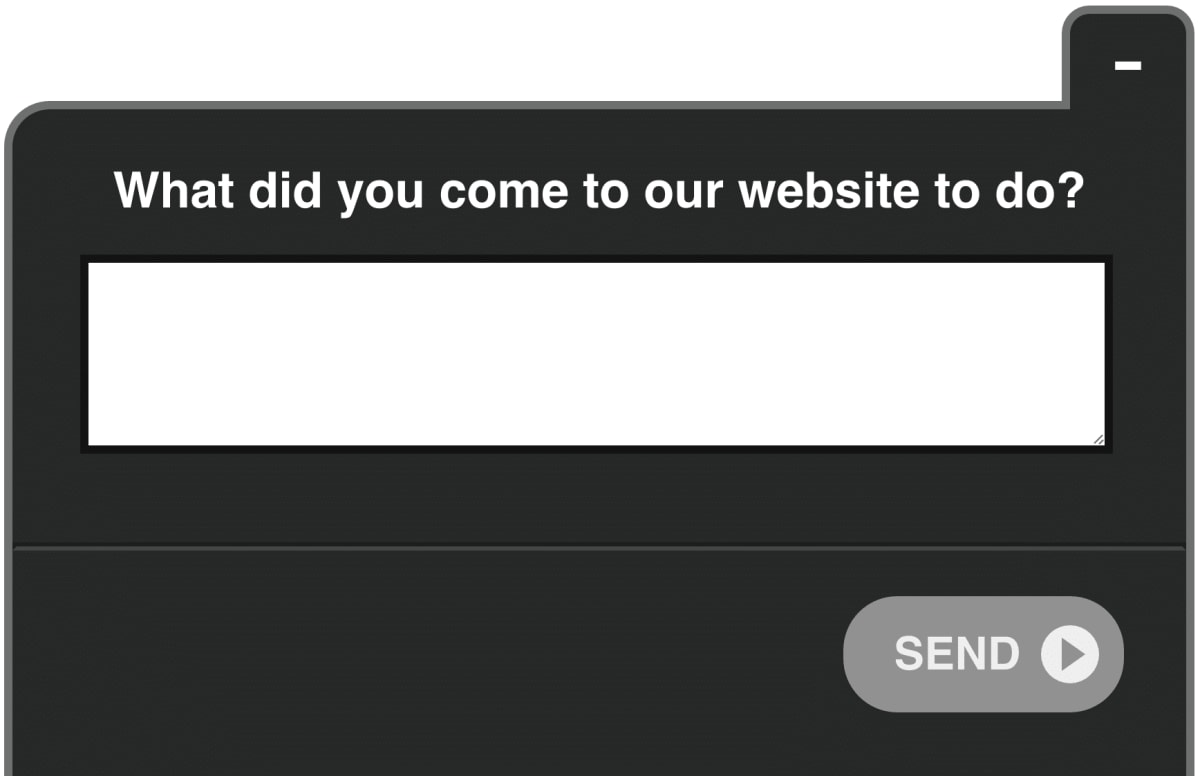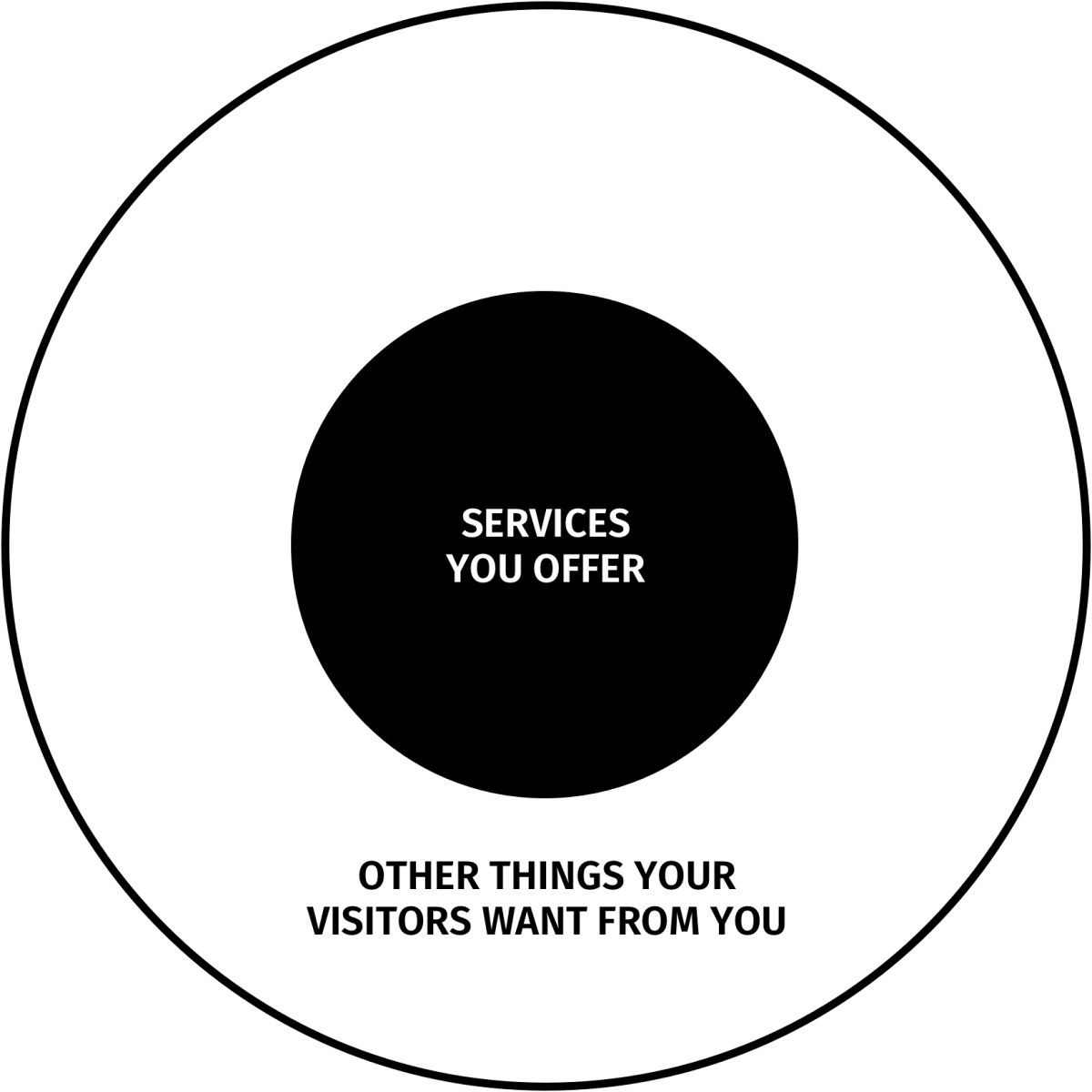How to use gap analysis to gain an unfair advantage over your competitors
(By the way, to get articles like this free in your inbox, subscribe to our newsletter.)
“Monopoly is the condition of every successful business.”
Peter Thiel, venture capitalist and co-founder of PayPal.
We have been urging companies to dominate their markets for over fifteen years. In fact, that’s one of the main things that we help our clients to do. Many of them are now leaders in their verticals.
In the following article, we will:
- Describe a powerful growth strategy that’s hidden in plain sight.
- Show you how to implement the strategy step-by-step.
- Include a ready-to-use template to get you started.
The strategy in question is used by many of the web’s most successful companies. It’s ridiculously effective for dominating an industry, yet many overlook it. Perhaps because it’s based on a hidden conversion killer: lack of interest.
Here’s what we mean by “lack of interest”:
- Visitors to your website can’t find what they want.
- Often because you don’t offer it.
- So they leave.
What should you do about that?
How superstores gain a formidable advantage
It’s crucial that your company becomes the dominant player in its market by satisfying as many of your visitors’ intentions as possible. If it doesn’t, another business will take that space, capture those economies of scale, and push your company out.
Superstores like Wallmart sell a huge number of products. If a visitor wants bananas then, yes, the superstore has bananas. If a visitor wants pet insurance then, yes, the superstore sells that too. And if a visitor wants children’s T-shirts then, yes, it sells those too.
By finding and filling the “gaps”, the store mops up more of the money that the visitors are willing to spend.

Filling in the gaps can have a huge impact. If you can satisfy twice as many of your visitors’ intentions, you effectively halve the cost of acquiring a customer. (Because the cost gets divided over twice as many purchases.) Plus, if visitors can get everything they want from you, they are less likely to visit your competition.
For contrast, let’s look at a company that can’t easily adopt this strategy: Heinz.
Heinz Ketchup could be the best in the world, but a Heinz store couldn’t become large if it only sold Heinz products. Few people—if any—want all their weekly groceries to come from one company.
There’s a limit to how large a store can become if it doesn’t satisfy many visitors’ intentions. Amazon began to do this early, presumably because many of its senior team members were from the retail industry, so they understood this economic imperative. If you visit Amazon.com and search for a book called Soils of Outer Mongolia, you will find what you need.
Amazon understands the importance of giving visitors whatever they want. They created Amazon Marketplace to ensure everything was available, even if they didn’t sell it directly. This approach makes financial sense but is also great for the visitor experience. Consequently, Amazon is often the first place that Amazon’s customers look—to the extent that some people forget that there are alternatives. Amazon is now nicknamed “The Everything Store”—and that was by strategy, not by chance.
So how can you become the Amazon of your niche?
How to use gap analysis to satisfy more of your visitor intentions
We use the following process to quantify the gaps worth filling. It’s a simple, practical approach that can generate breakthrough results.
1. Find out what your visitors want
Using an on-page survey, ask your visitors why they visited your website. You are looking to collect at least 100 responses.

2. Collate the responses
Once you have your responses, create a table with the following columns. Feel free to copy our ready-to-use template:
- Column 1: Your visitors’ intentions. In this column, list all the responses to the question, “What did you come to our website to do?” Of course, no two responses are the same, so you’ll need to group all the responses with similar meanings. (For example, if one response was “Buy pet insurance” and another was “To see if I should get pet insurance,” you might want to categorize them both as “Pet insurance.”)
- Column 2: Percentage of all visits (%). Enter the percentage of visitors who gave each response.
- Column 3: Do we satisfy this intention? Enter a yes or a no, depending on whether this is a visitor intention that your website satisfies. For the example above, if you did sell pet insurance, you’d write “Yes.” If you didn’t, you’d write “No.”
Column 3 may reveal that you satisfy only a small percentage of your visitors’ needs. Many companies accept this as inevitable. If the visitor wants pet insurance and the website doesn’t offer pet insurance, the company dismisses the visitor as having been unqualified.

3. Analyze the gaps and opportunities
The opportunity comes when you populate the final two columns.
- Column 4: How do we currently monetize this intention (and how could we)?
- Column 5: How much revenue do we currently generate from this (and how much could we)?
Columns 4 and 5 allow you to estimate the opportunity cost, revealing how you could increase your profit per visitor. For new products, you will have to estimate the value for Column 5. We base our estimates on trial runs, supplier information, or industry sales figures where available. You can even base estimates on survey responses if you make sensible assumptions about conversion rates.
Why is it so important to increase the profit per visitor? Because for many websites, the key metric is the acceptable cost per acquisition, which is how much you can afford to spend on acquiring each visitor. And that figure depends on how much profit you can generate from each visitor. So…
- if you can increase your profit-per-visitor,
- you can spend more to acquire a visitor,
- outbidding your competitors on ads,
- and enjoying the lion’s share of the traffic.
If you’ve read The Power Law of CRO, you’ll recognize that growing profit-per-visitor increases the Lifetime Customer Spend element of the equation. Conversely, if your competitors can monetize your visitors better than you can, then there’s a good chance they’ll do the same to you.
(It might sound mercenary to talk about “monetizing visitors,” but from a visitor’s-eye view, monetization tends to be a good thing. As a consumer, you’ll find a large correlation between the companies you like and the companies you give money to.)
Three easy ways to generate ideas for monetizing visitor intentions
The following methods may help you identify products and services that would satisfy your visitors’ intentions (and provide ideas for column 4):
- Method 1: Temporarily add Google AdSense or equivalent service to the page. AdSense is powered by auction bidding, so the ads will be those that the advertisers (and Google) are confident will persuade your visitors to spend money. Once the ads are live on your website, study which products and services they promote.
- Method 2: Look at which products and services your competitors offer—particularly those they push hard.
- Method 3: Identify companies which have similar economics to yours and look at which products they cross-sell. Perhaps your company sells a B2B commodity, like safety signage. If so, look for other companies that sell B2B commodities and see what other products and services they offer. Not only will this reveal products you could be cross-selling, but it may suggest companies who could cross-sell your products.
An easy, risk-free way to add products and services
If your research reveals that you should sell pet insurance, you don’t need to set up an insurance company overnight. The following process allows you to carefully explore how you could offer a new product range. The steps are listed in order of increasing risk and commitment:
- Continue running ads on your page: If the ads generate significant revenues, you could carry on showing them. Some of our clients make a significant fraction of their revenue from displaying ads.
- Continue advertising other companies’ products, but bypass the ad network: Contact the companies advertising on your page and do deals with them directly. They can pay you by impression, by lead, or by sale.
- Bring more of the value chain in-house by creating a similar product or service yourself.
An example of creating additional product ranges
We helped one of our clients, Morphsuits, to become the 18th-fastest-growing company in the UK.
While studying Morphsuits’ analytics, we noticed that many visitors were searching for a type of Halloween suit that didn’t exist. Armed with the data, Morphsuits started manufacturing the new type of suit, safe in the knowledge that there was zero risk in creating it. The new suit became a top seller. We weren’t surprised. We even knew approximately how many it would sell.
The dynamic Morphsuits team took this principle far. The company rebranded as MorphCostumes and now sells hundreds of suits and costumes.
How much did you like this article?
What’s your goal today?
1. Hire us to grow your company
We’ve generated hundreds of millions for our clients, using our unique CRE Methodology™. To discover how we can help grow your business:
- Read our case studies, client success stories, and video testimonials.
- Learn about us, and our unique values, beliefs and quirks.
- Visit our “Services” page to see the process by which we assess whether we’re a good fit for each other.
- Schedule your FREE website strategy session with one of our renowned experts.
Schedule your FREE strategy session
2. Learn how to do conversion
Download a free copy of our Amazon #1 best-selling book, Making Websites Win, recommended by Google, Facebook, Microsoft, Moz, Econsultancy, and many more industry leaders. You’ll also be subscribed to our email newsletter and notified whenever we publish new articles or have something interesting to share.
Browse hundreds of articles, containing an amazing number of useful tools and techniques. Many readers tell us they have doubled their sales by following the advice in these articles.
Download a free copy of our best-selling book
3. Join our team
If you want to join our team—or discover why our team members love working with us—then see our “Careers” page.
4. Contact us
We help businesses worldwide, so get in touch!
© 2025 Conversion Rate Experts Limited. All rights reserved.
















